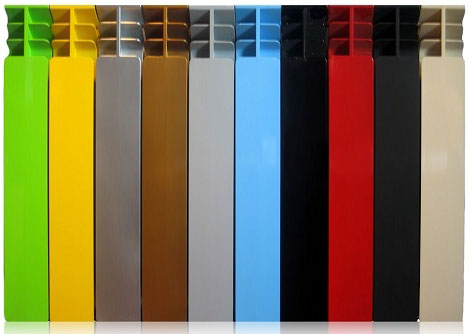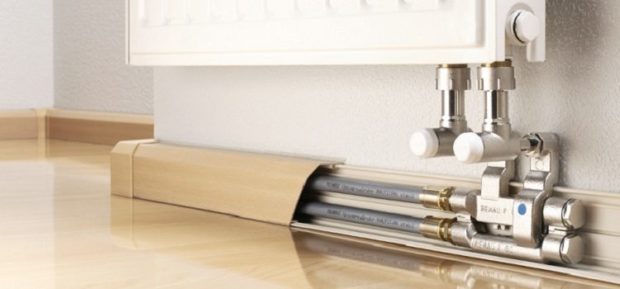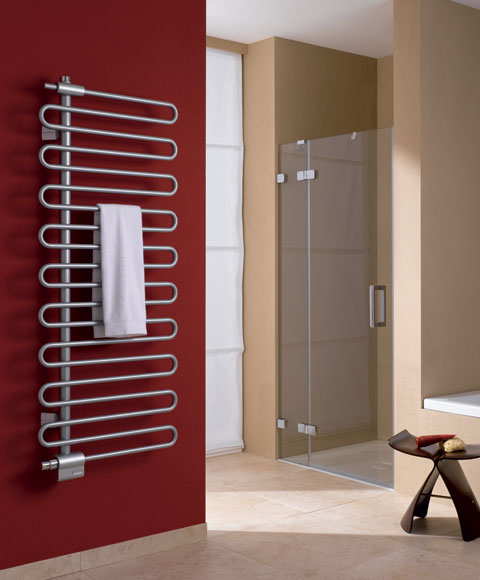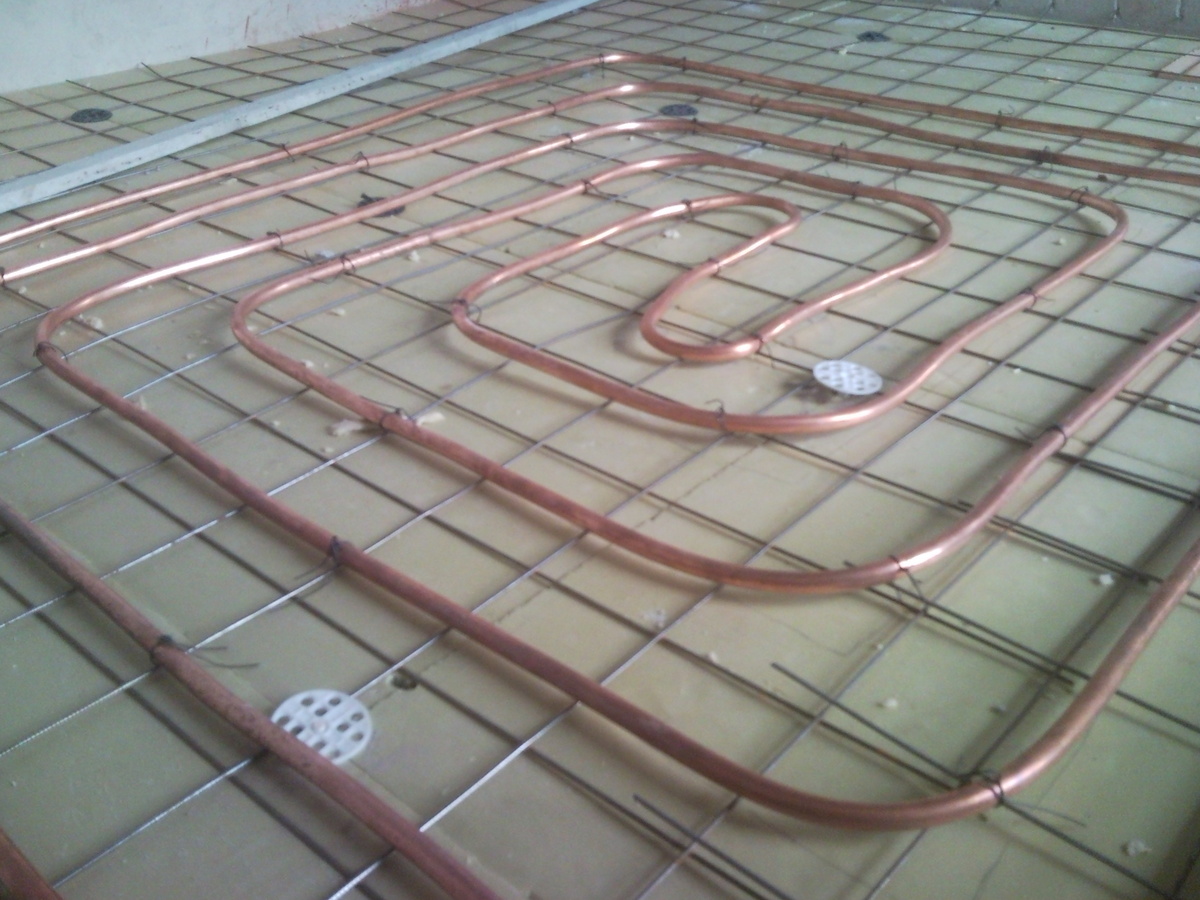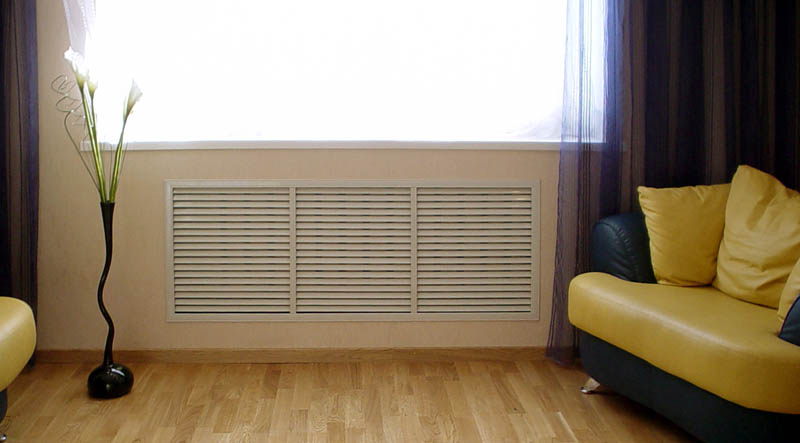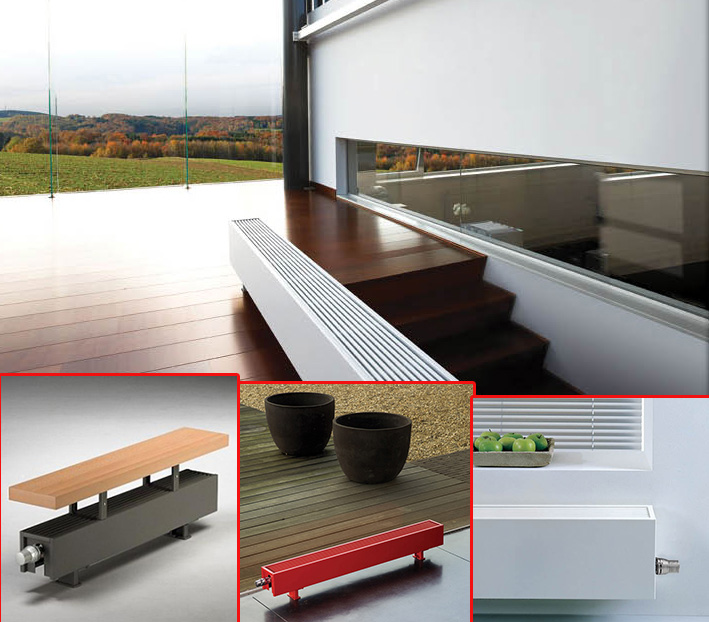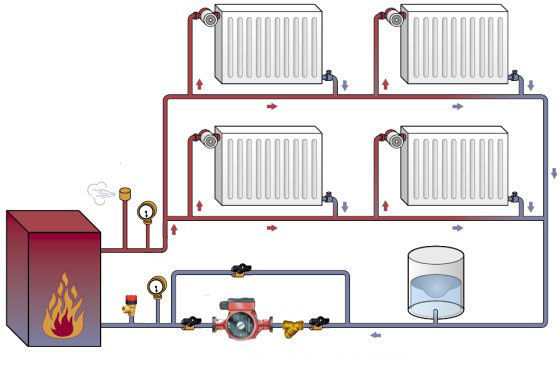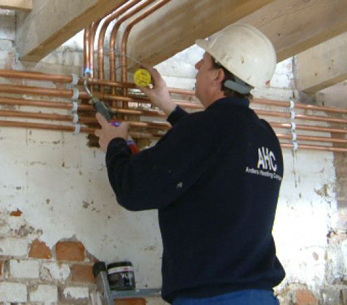Which heating radiator is better for an apartment, a private house
In winter, you can’t do without heating, but heating system unthinkable without radiators. It depends on them how much the conditions will be comfortable, how evenly the heat will be distributed, how quickly the room will warm up, and how safe the entire heating system as a whole will be. How to find a radiator that will best suit specific conditions, look good and warm well? The answer is simple: it is important to choose a reliable seller, but at the same time be aware of some of the nuances and features of some types of radiators. These subtleties require close attention.
The first thing to consider when choosing a radiator, this is a type of heating system and its inherent features. So, need to consider coolant temperature, pressure, chemical composition, stability, and much more. If in a house with independent heating You can create optimal conditions for the radiator itself: supply purified water to it, and keep the temperature and pressure normal. When it comes to apartment buildings, which are connected to central heating, the circumstances change slightly. Here, temperature fluctuations and water hammering became quite familiar, when the water pressure rises sharply, and this is not to mention the composition of the incoming coolant: it can have an acidic or alkaline environment, which can lead to corrosion, be too harsh, contain rust particles that get there of pipes. Not every radiator can withstand operation in such conditions, which can lead to failure.
When buying a radiator, it is better to clarify as much as possible permissible temperature and maximum pressurein which failures and malfunctions will not occur. These data must be compared with the parameters of the heating system: for example, for most high-rise buildings with a single-tube open system, the maximum temperature is 1050С, and the pressure is 10 atm, but this is without taking into account water hammer. Even better, of course, if the radiator has a power reserve in order to become a reliable and durable element in the heating system. It is also important to take into account the heat transfer, on which it depends on how quickly the room starts to warm up after starting the heating. In addition, do not forget about the appearance, and about the cost. The whole complex of the listed parameters depends on what material the radiator is made of.
Cast Iron Radiators
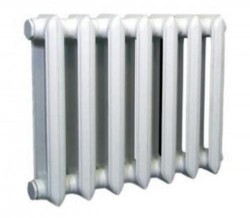 For about a century, cast-iron radiators have been used in domestic open spaces, and, oddly enough, have retained their popularity until now. They owe such folk love to their numerous advantages. The first and one of the most important advantages is the affordable price, because by this parameter cast-iron batteries will give odds to any others. In addition, they are the best suited for operating conditions in modern apartment buildings, as they can withstand temperature extremes, any pressure, and frequent water hammer without any problems. Even if an emergency shutdown of heat occurs, the cast-iron radiator will give off heat for a long time, and it warms up relatively quickly.
For about a century, cast-iron radiators have been used in domestic open spaces, and, oddly enough, have retained their popularity until now. They owe such folk love to their numerous advantages. The first and one of the most important advantages is the affordable price, because by this parameter cast-iron batteries will give odds to any others. In addition, they are the best suited for operating conditions in modern apartment buildings, as they can withstand temperature extremes, any pressure, and frequent water hammer without any problems. Even if an emergency shutdown of heat occurs, the cast-iron radiator will give off heat for a long time, and it warms up relatively quickly.
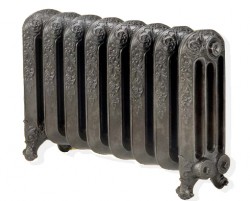 Cast iron is a material that is resistant to hard alkaline water, it does not care about air jams, rust particles and other impurities in the coolant, which can have a detrimental effect on all other radiators.All this still makes you pay attention when choosing precisely cast-iron radiators. They are excellent suitable for apartments with central heating, but in private homes they can be used with the same success.
Cast iron is a material that is resistant to hard alkaline water, it does not care about air jams, rust particles and other impurities in the coolant, which can have a detrimental effect on all other radiators.All this still makes you pay attention when choosing precisely cast-iron radiators. They are excellent suitable for apartments with central heating, but in private homes they can be used with the same success.
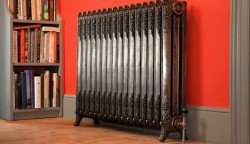 With all its advantages, the cast-iron battery cannot be called stylish and unusual, and in its classic design it is hardly capable of decorating the interior, and the owners will immediately have to think about how to disguise it. But there is an argument to this fact: modern manufacturers they started to create real works of art, not radiators - they decorate them with monograms, paint like bronze or copper, and as a result, such a detail becomes an excellent decoration of the classic interior.
With all its advantages, the cast-iron battery cannot be called stylish and unusual, and in its classic design it is hardly capable of decorating the interior, and the owners will immediately have to think about how to disguise it. But there is an argument to this fact: modern manufacturers they started to create real works of art, not radiators - they decorate them with monograms, paint like bronze or copper, and as a result, such a detail becomes an excellent decoration of the classic interior.
Cast iron radiators are also blamed for being too bulky, but there's nothing to be done about it. In addition, they have a high inertia, which will save the owners in case of sudden blackouts, but interferes with equipping the radiator with a temperature regulator if desired.
Aluminum radiators
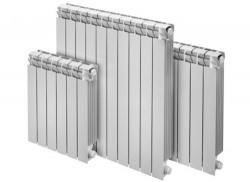 Aluminum radiators are the main competitor of cast iron, and today it occupies key positions in the market. Such batteries have earned the recognition and trust of many users due to their ease of installation, attractive appearance, high heat dissipation and light weight. And due to the fact that the number of sections in such radiators can be completely arbitrary, they become truly universal option. In addition, they can boast of low inertia, so they can be equipped with a thermostat, and the amount of coolant here will be minimal.
Aluminum radiators are the main competitor of cast iron, and today it occupies key positions in the market. Such batteries have earned the recognition and trust of many users due to their ease of installation, attractive appearance, high heat dissipation and light weight. And due to the fact that the number of sections in such radiators can be completely arbitrary, they become truly universal option. In addition, they can boast of low inertia, so they can be equipped with a thermostat, and the amount of coolant here will be minimal.
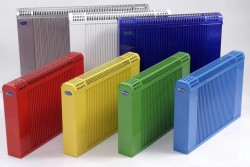 For all its merits, aluminum radiators are worth recommending. use only in private homes with autonomous heating. The fact is that they are sensitive to the composition of water and, with an increased alkali content in water, the corrosion process can begin. The situation is slightly saved by the protective inner coating, so before buying you need to make sure it is available. Sectional structure turns not only advantages, but also disadvantages, since there is a possibility of leakage between sections. As for resistance to water pressure, this type of battery is not a leader, withstanding up to 16 atm, which means that water hammer, unfortunately, can even damage a new radiator.
For all its merits, aluminum radiators are worth recommending. use only in private homes with autonomous heating. The fact is that they are sensitive to the composition of water and, with an increased alkali content in water, the corrosion process can begin. The situation is slightly saved by the protective inner coating, so before buying you need to make sure it is available. Sectional structure turns not only advantages, but also disadvantages, since there is a possibility of leakage between sections. As for resistance to water pressure, this type of battery is not a leader, withstanding up to 16 atm, which means that water hammer, unfortunately, can even damage a new radiator.
Special attention should be paid to the appearance, because aluminum radiators are the leaders in this parameter. They are not only as light and cute as possible. Designers are constantly working on them, who easily turn such a functional element into a decoration interior of any style.
Steel radiators
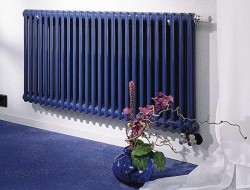 Steel radiators are another great option. for rooms with individual heating. They can be panel and tubular, but the appearance in any case is maintained at the highest level. Panel can heat the air in the room not only due to radiation, but also by convection: the heat exits through the walls and through the grate at the upper end. The obvious advantages of these batteries include an affordable price, good heat dissipation, low inertia, corrosion resistance, and the appearance leaves only pleasant emotions. All this makes these radiators ideal for homes and institutions with individual heating.
Steel radiators are another great option. for rooms with individual heating. They can be panel and tubular, but the appearance in any case is maintained at the highest level. Panel can heat the air in the room not only due to radiation, but also by convection: the heat exits through the walls and through the grate at the upper end. The obvious advantages of these batteries include an affordable price, good heat dissipation, low inertia, corrosion resistance, and the appearance leaves only pleasant emotions. All this makes these radiators ideal for homes and institutions with individual heating.
For ordinary apartments, such radiators are suitable only with a big stretch. Although they demonstrate excellent performance, their installation in this case is a huge risk, since they are sensitive to the presence of oxygen in the supplied coolant, do not withstand pressures of more than 16 atm and temperatures of more than 110 degrees. it would seem that they fit optimally into the parameters of many heating systems, but nevertheless, an adjustment must be made for the instability of their work.
Bimetal radiators
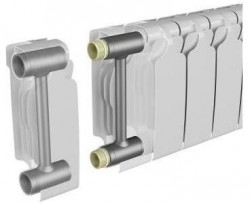 This type of battery combines advantages of aluminum and steel batteries, can be used both in a private house and in an apartment with central heating. This is one of the most reliable alternatives to a cast-iron radiator, which has a more attractive appearance, but also a higher price.
This type of battery combines advantages of aluminum and steel batteries, can be used both in a private house and in an apartment with central heating. This is one of the most reliable alternatives to a cast-iron radiator, which has a more attractive appearance, but also a higher price.
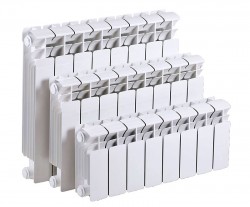 Since such batteries consist of two metal metals: the ribs are made of aluminum, and the pipeline is made of steel, they accumulate the advantages of two materials. So, steel makes the product resistant to corrosion and the composition of the incoming water, and aluminum is responsible for heat transfer and a stylish design. Such a product is durable, and on sale you can find radiators, painted in any colorAnd at the same time tinting and updating the coating layer regularly, as is the case with cast-iron batteries, is unnecessary. Numerous manufacturers They say that such radiators are able to work for about 40 years, withstanding a pressure of up to 30-50 atm and a temperature of up to 1300C - a good supply for modern apartments.
Since such batteries consist of two metal metals: the ribs are made of aluminum, and the pipeline is made of steel, they accumulate the advantages of two materials. So, steel makes the product resistant to corrosion and the composition of the incoming water, and aluminum is responsible for heat transfer and a stylish design. Such a product is durable, and on sale you can find radiators, painted in any colorAnd at the same time tinting and updating the coating layer regularly, as is the case with cast-iron batteries, is unnecessary. Numerous manufacturers They say that such radiators are able to work for about 40 years, withstanding a pressure of up to 30-50 atm and a temperature of up to 1300C - a good supply for modern apartments.
As a result, we actually get perfect radiator, which frighten off users can only cost. But it also has other drawbacks: it is sensitive to the increased oxygen content in water, and over time it can accumulate slag deposits.
Copper radiators
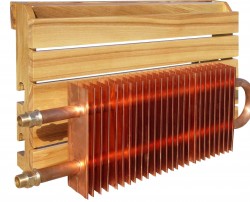 These radiators differ from all others in that they are made from a single pipe and without impurities of other metals. Among the benefits These products distinguish their high thermal conductivity: it is 2 times higher than that of aluminum, and 4-6 times higher than that of steel and cast iron. That is why a room with a copper radiator will heat up instantly, and it is unnecessary to supply a coolant to the system due to the design features of the battery, and as a result, it warms up already 3 minutes after turning on the heating. That is why this type of radiator is great for use in private homes. In addition, the copper radiator is characterized by low inertia, so it can easily be equipped with a thermostat, due to which an optimal climate can be created in any room.
These radiators differ from all others in that they are made from a single pipe and without impurities of other metals. Among the benefits These products distinguish their high thermal conductivity: it is 2 times higher than that of aluminum, and 4-6 times higher than that of steel and cast iron. That is why a room with a copper radiator will heat up instantly, and it is unnecessary to supply a coolant to the system due to the design features of the battery, and as a result, it warms up already 3 minutes after turning on the heating. That is why this type of radiator is great for use in private homes. In addition, the copper radiator is characterized by low inertia, so it can easily be equipped with a thermostat, due to which an optimal climate can be created in any room.
Copper has high corrosion resistance, it is almost not affected by aggressive environments, so water with a high alkali content is not able to destroy the radiator from the inside. That is why such batteries are recommended to be installed even in apartment buildings, which makes copper radiators universal.
So what to buy?
In principle, from all of the above, everyone will already be able to conclude which type of radiator is most suitable for specific conditions. So if for central heating, the cast iron radiator is still the best option, which is not at all affected by high temperatures, nor by a sharp increase in pressure, or the composition of the coolant that is dangerous for other types of materials. Yes, and the room he warms up relatively quickly, but is inexpensive, so it is available to everyone. Of course, connecting a temperature regulator to it will not work, but you can do without it, and beat the unsightly appearance of the "accordion" using the hidden resources of your imagination. You can use aluminum radiators in an apartment building only at your own peril and risk, and the only alternative to the cast iron battery is a bimetal radiator, which wins both in weight and in appearance, but due to its high cost, remains inaccessible to many users.
In private homes, everything is much simpler - any radiators can be usedthat suit in appearance and price. As a rule, autonomous heating systems differ in more or less stable operation systems, and the water undergoes additional processing, therefore temperature and pressure surges are not observed here, as well as the supply of hard alkaline water with dirt particles. That is why the best option in this case is aluminum radiatorwhich is easy to install, lightweight, beautiful, has good heat dissipation, and at the same time inexpensive. Steel radiators also, in terms of the totality of their characteristics, they fit perfectly into individual heating systems, and they can also be installed in multi-storey buildings, but there is some risk here. But copper is excellent in both casesbut do not differ at an affordable price.
We calculate the required power
The power, or the efficiency of heat transfer from the radiator to the consumer, must be taken into account in any case, because if you make a mistake with this parameter, the radiator, no matter what material it is made of, will bring the desired result. You need to calculate power based on a number of parameters, including type of building, number of windows, type of windows, number of exterior walls, ceiling height, room area, etc. Obtaining the final number, it is compared with the power of the selected type of radiator and the number of sections is determined. So, for example, for a room with a wooden window and one door, with a ceiling height of 3 meters, you need a radiator with a capacity of 90 watts per square meter. The power of the main types of radiators per one section is as follows: cast iron 90-140 W, aluminum - 180 W, bimetal - 190 W, steel - from 450 to 5700 W for the entire radiator. Thus, it is possible to obtain the optimal value of power and number of ribs so that the room is neither hot nor cold.
Finally
Since the radiator is an essential part of the entire heating system, close attention should be paid to its choice. There is no single and universal answer to the question of which heating radiator is better, otherwise there would not be so many types of different batteries. Before buying, everyone should take into account the features of the functioning of their own heating system, clearly assess the operating conditions, requirements for appearance and cost, and choose the best option based on the totality of these data.



